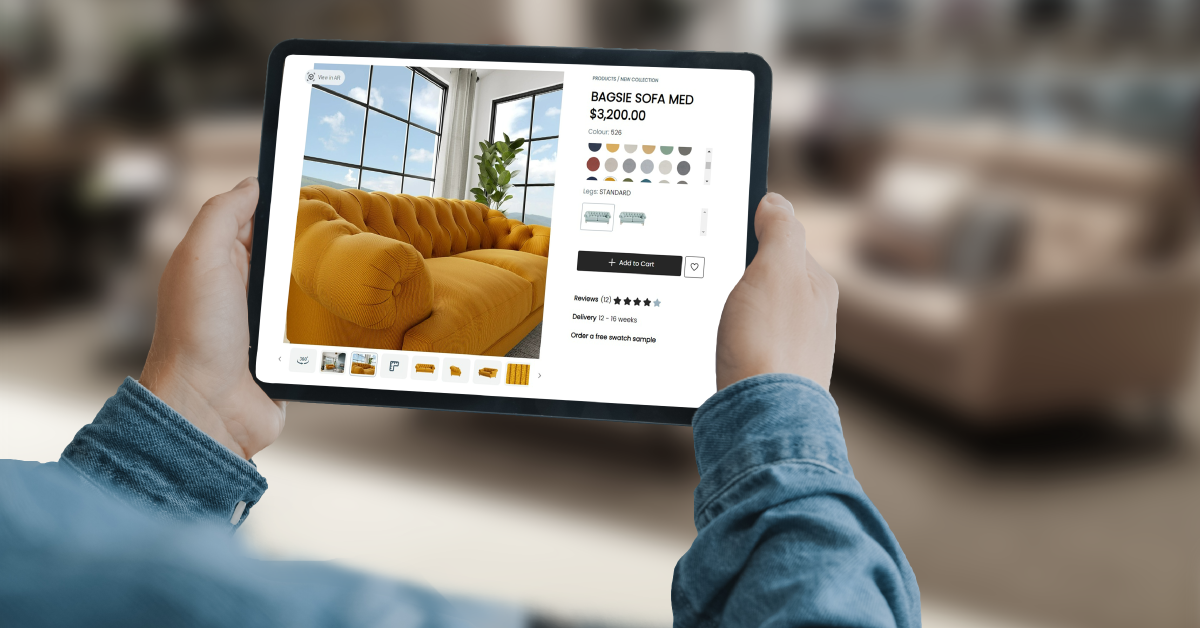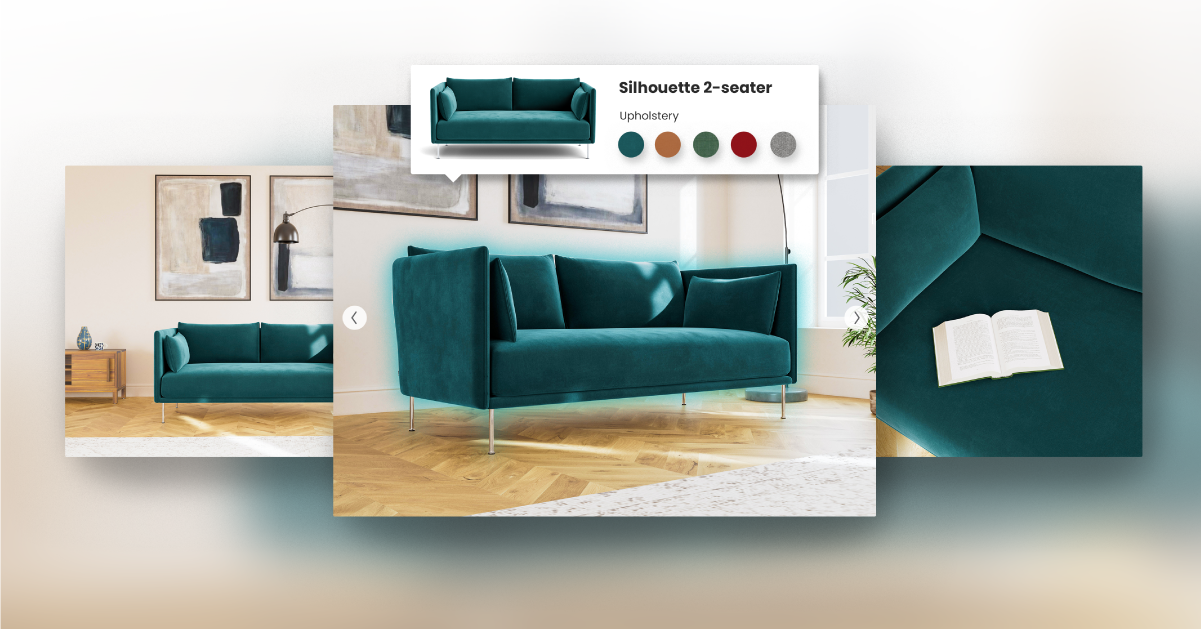In the span of a few years, we’ve heard both extremes—the first one, that e-commerce would never replace the in-store shopping experience, and soon after the pandemic started, the second one—retail is dead. The good news is that neither of these is true.
There’s no doubt that the way people shop for furniture has changed. However, offering them the best experience at every touchpoint will be crucial moving forward. Instead of trying to make them come to the store or push them to purchase online, furniture retailers and DTC brands will have to provide a seamless end-to-end purchasing experience.
This poses the question: What will the role of furniture stores be in the future, and what can you do to meet (and exceed) customers’ needs?
How the furniture landscape changed due to COVID-19
The pandemic has urged furniture companies to think more about their digital presence and the benefits of having a well-optimized e-commerce store. And a large number of customers have become more accustomed to online shopping.
The lockdowns brought a spike in website traffic for websites selling home decor and furniture products online. According to Statista, they generated 1.7 billion visits in March 2020, up from 1.56 billion global visits in January 2020.
This, on the other hand, triggered furniture businesses to invest more in their e-commerce experience. Data shows that 69% of furniture retailers in the United States reported that they planned to increase their focus on e-commerce in response to the coronavirus (COVID-19) pandemic.
McKinsey stated that the pandemic had sped up the adoption of digital technologies by several years. When it comes to the furniture industry, according to Forrester’s findings, over the next 12 months, 100% of survey respondents are planning to make new technology investments, indicating a widespread trend toward embracing technology in the industry.
For the majority of companies (68%), moderate investments in new technology are planned, amounting to 10%-25% of their budget. Meanwhile, a notable 17% of companies are preparing for significant investments, allocating more than 25% of their budget.
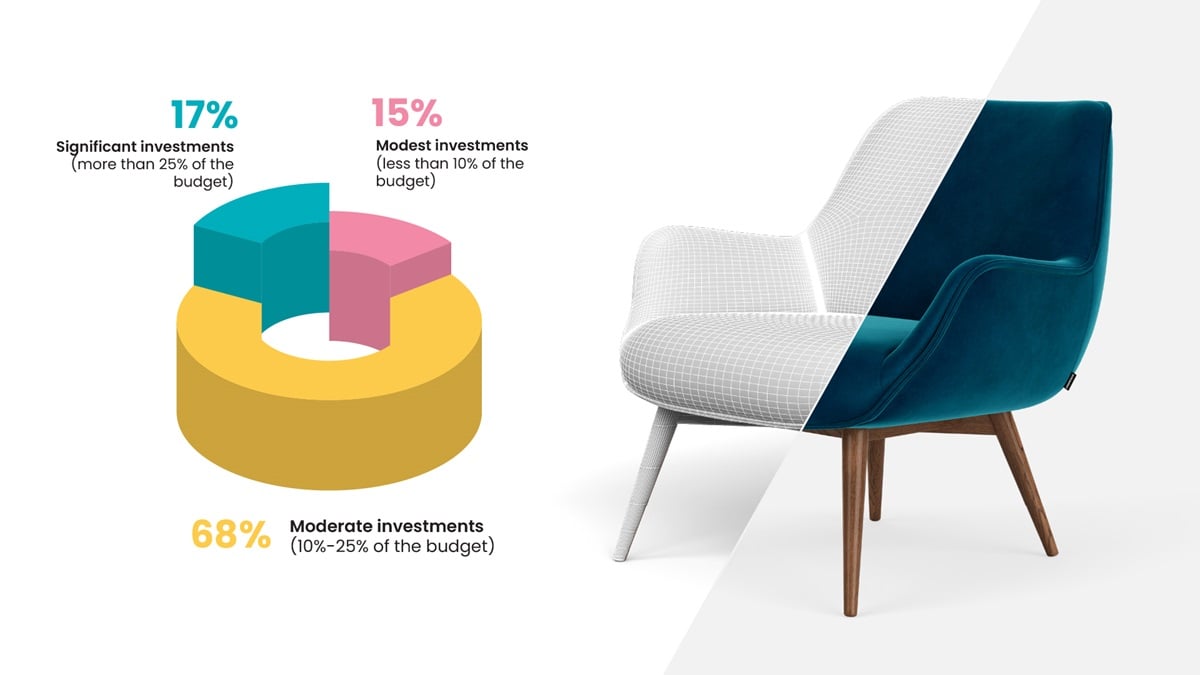
That said, furniture stores remain one of the core pillars of the success of furniture businesses. But here’s the thing: a new furniture retail playbook is emerging, and companies that want to stay ahead of the competition will have to adjust their strategy.
Physical retail post-pandemic
Furniture Today’s Strategic Insights study discovered that consumers enjoy shopping at stores for furniture (52%) and home accents (55%). Numbers vary based on age difference, so more than half of Millennials and Gen X said they enjoyed the in-person furniture-buying process. This number is slightly lower for younger customers—45% of Gen Z showed interest in buying furniture at a physical location.
Another survey from Consumer Insights Now shows that 67% of customers prefer the in-store buying experience because of the ability to see, feel, and sit down on the furniture, while 39% and 31%, respectively, said it’s easier and more convenient to shop in a physical store.
Among other reasons, customers prefer in-store because they are used to shopping at a physical store (30%), better delivery (24%), access to better deals (23%), and personal service they get at a physical store (20%).
On the other hand, customers said they prefer online shopping because of its convenience and ease of delivery, access to better deals, wider selection, and the ability to compare and contrast different types of furniture online.
Now, marketing leaders in the furniture space are grappling with the question of how they can create an engaging in-store experience and a seamless buyer journey from start to finish.
The new role of the furniture store
The dizzying array of changes in the furniture industry has challenged the traditional in-store shopping process. As a result, leading players in the space have implemented different strategies to reinvent the role of the furniture store. Let’s look at five best practices from forward-thinking players we’ve spotted in the furniture industry.
1. Experiential retail is on the rise
After the initial closing of physical furniture stores during the lockdown, retailers and DTC brands started thinking about new ways to create more engaging furniture shopping experiences in brick-and-mortar stores. It became clear that the store should become a destination that consumers want to visit.
Enter experiential retail.
When furniture businesses focus on experiential retail, they elevate the furniture shopping experience to new heights. Retailers who manage to provide customers with unique and pleasant in-person shopping experiences are the ones that will keep customers engaged, which ultimately results in higher sales.
The UK-based DTC brand Loaf has dedicated time and effort to creating an amazing customer experience in its stores by making its customers the center of attention. For that reason, Loaf invested in both the in-person and the digital shopping experience. They introduced high-quality 3D product visualization and 4K zoom on their website, thus bringing products closer to customers. Moreover, Loaf has a completely different approach to physical retail with their Shacks, which are much more than traditional stores and are created to provide customers with a better in-person shopping experience.
The stores, also known as “slowrooms” or Shacks, contain several sets of different living rooms with specifically selected visual merchandising props. For instance, when visiting one of Loaf’s Shacks, you can see a 1970s TV displaying old footage of Wimbledon or a pinball machine and other similar eclectic props. You can even find a mini fridge with complimentary drinks and a table with puzzles and coloring pencils for customers’ children.
The Shacks are what separate Loaf from its competitors. The idea behind this concept is to provide a unique experience for the customers and make them return to the store or visit the website and make a purchase. After all, Loaf’s mission has always been to create an unparalleled customer experience.
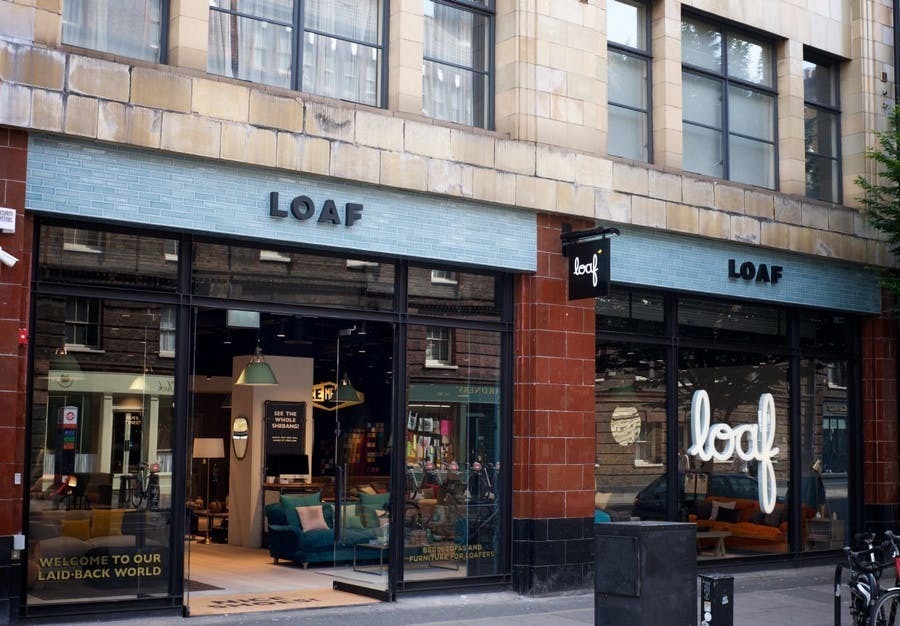
2. The importance of virtual consultations
We live in an always-on, always-connected, multi-screen world where customers no longer see a distinction between online and offline shopping—they expect to get what they want, when they want, and where they want.
As the digital and in-store experiences blur, we can see forward-thinking retailers using this to their advantage. Instead of assuming that customers have little to no knowledge of the products they want to buy, innovative retailers embrace the new reality that customers gather information well before they set foot into the store. To make the most of this behavioral shift, retailers use digital technology to extend their storefronts.
One of the ways to achieve this is by offering virtual consultations. Retailers are using live chat tools or virtual video consultations to give customers prepurchase product advice, answer their questions, or help them make a decision.
Customers share floor plans, send photos of their homes, and hop on a video or phone call to get expert advice on making the most of their spaces. They get answers to all of their questions, which removes a huge weight off their shoulders.
Australian furniture retailer King Living offers in-store and virtual consultations to create a delightful furniture shopping experience. Customers can book a 45-minute slot with the in-store sales team to discuss furniture solutions without visiting the store in person. The virtual one-to-one session can be just the thing customers need to quickly turn intent into action.
3. Reinventing the in-store experience with endless aisle
When displaying products in a store, furniture retailers and DTC brands have always had limited space problems. For instance, when you go to a physical shop, you can find a sofa in one color and material. If you want to see it in other colors or fabrics, you have to imagine it by seeing a small material cloth and draping it on the sofa.
With 3D product visualization, you can have a quick overview of your favorite sofa in all available colors and fabrics in one place. Endless aisle enables customers to browse online for products that are either out of stock or not sold in-store and can only be shipped to the customers’ homes after purchase.
Sofacompany is a Scandinavian DTC brand that, back in 2016, wanted to offer its customers the opportunity to design their own sofa by choosing fabric and legs and creating a unique design. This also enabled customers to get a better sense of what they were buying and to experience a more engaging online shopping experience. Besides increased online sales, the introduction of “Design Your Own Universe” helped Sofacompany increase the number of deals in-store as well.
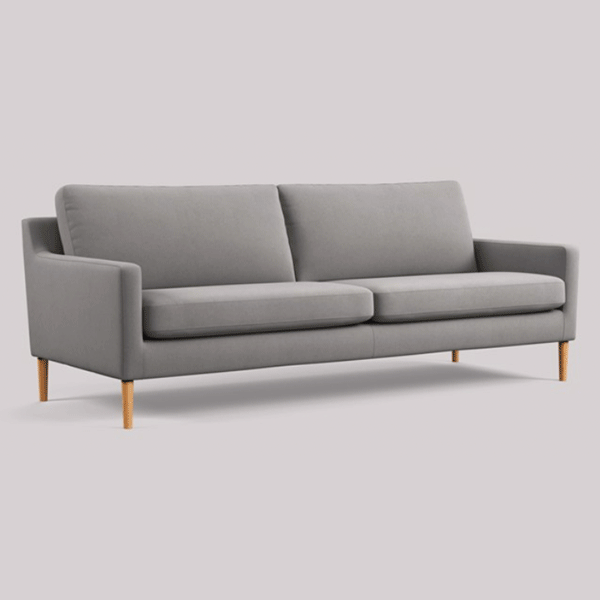
According to Sofacompany, consumers who enter the “Design Your Own Universe” experience have significantly higher conversion rates.
The furniture store of the future is supposed to be a place where you can choose the product you want in the exact fabric and color you want. An endless aisle strategy can help furniture retailers with product personalization and empower customers to get the product they want when they need it, whether the store has it in stock or not.
4. A big leap towards a small store format
The disruptions fueled by the pandemic have accelerated transformation in the industry and forced retailers to rethink the role of furniture stores. Today’s world is all about convenience and efficiency. Therefore customers have different expectations of furniture retail. Unlike in the past, when massive stores were the hallmark of the furniture industry, today we can see small, efficient omni stores equipped with technology and located near the customers.
The reason? Customers appreciate highly tailored, personalized, and more intimate associate experiences rather than reaching their daily steps goal in a massive furniture store.
IKEA is dedicated to keeping a pulse on customer behavior and making strategic decisions based on data. One of the big strategic decisions was to reinvent retail by bringing IKEA closer to the customers through a diverse strategy of city-center locations, traditional suburban stores, improved capabilities for online shopping, and home deliveries and services.
As part of the new strategy to create a more convenient shopping experience, IKEA started opening smaller-format stores in city centers. According to IKEA, the goal is to make home furnishing products more accessible and affordable.
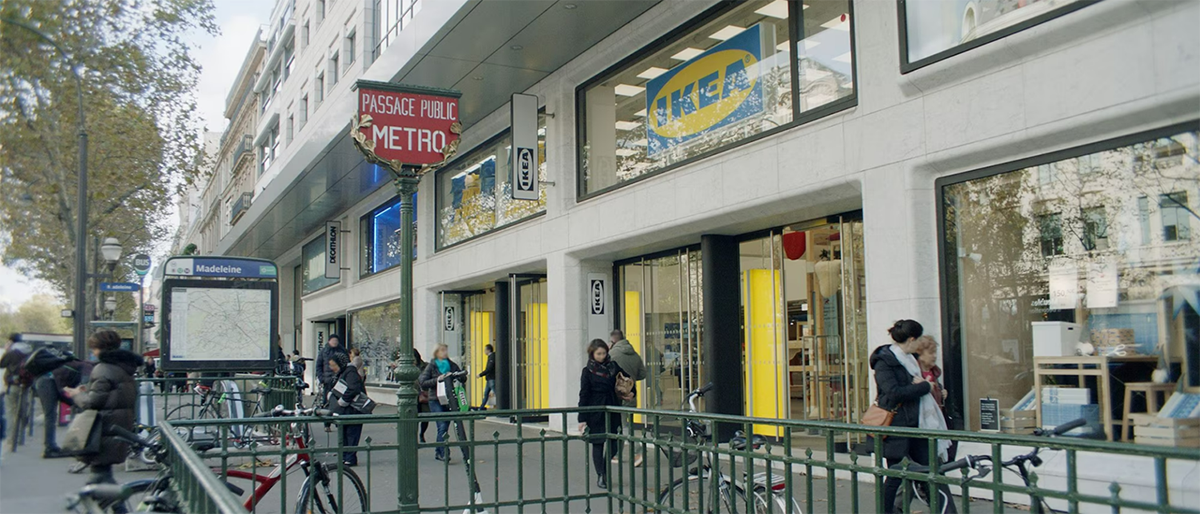
5. Getting ready for the new generation of customers
Despite all the challenges over the last few years, furniture businesses have a solid reason to feel bullish because of a tailwind coming: a generational shift in consumer shopping behaviors.
Digitally native generations have completely different expectations for furniture shopping, and businesses that want to stay relevant for the years to come must adjust their retail strategy.
One of the biggest players in the space, Ashley, has started a nationwide store refresh by showcasing trend-forward styles and highlighting new product offerings inspired by current design trends. The new store will feature a modern look and feel and an elevated in-store shopping experience. This is part of Ashley’s larger strategy aimed at appealing to a younger demographic of consumers.
As reported by Home Accents Today, the refreshed stores feature an open-concept floor plan, an updated mattress gallery, and new interior design elements. To promote the store refreshes, Ashley will host in-store events offering giveaways, free workshops, and more.
Ready to embrace the future?
The future of the furniture store lies in implementing an omnichannel strategy. The biggest furniture players on the market have already invested their money and time in providing an infallible in-store experience in addition to an engaging online shopping experience.
Are you prepared for the future furniture store? If you want to discover how to reinvent your omnichannel strategy and empower your customers’ digital experience with 3D product visualization, we’re here to help. Let's talk.

